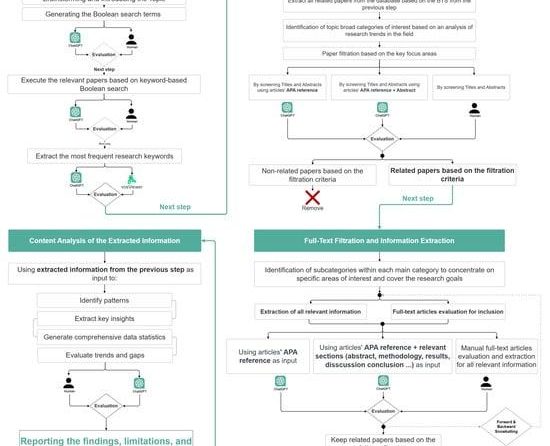Lanny Wadkins, a distinguished name in professional golf, is celebrated for his expertise in both swing mechanics and strategic course management. His instructional insights provide a complete framework for golfers aiming to enhance their technical abilities while effectively navigating the intricacies of the game. This article examines Wadkins’ methodology, highlighting the biomechanical aspects of a successful golf swing, including grip, stance, and tempo, as well as strategic considerations for effective course management. By integrating practical drills, exercises, and decision-making strategies, Wadkins equips golfers wiht essential tools to improve their performance and enjoyment of the sport. Grasping these technical and strategic elements is vital for players looking to elevate their game and achieve consistency on the golf course.
Understanding the Biomechanics of the Golf Swing
The biomechanics of the golf swing are essential for generating power and maintaining accuracy throughout the swing. Key components such as **grip**, **stance**, and **posture** play a significant role in the efficiency of the swing and the golfer’s ability to replicate a consistent motion. Focusing on the **grip** ensures proper wrist action, crucial for a smooth release at impact. The **stance** serves as the foundation, vital for balance and generating the torque necessary for a powerful swing. Lastly, **posture** affects body rotation and weight distribution, directly influencing swing mechanics.
Incorporating drills that emphasize these biomechanical principles can greatly enhance a golfer’s performance. For example,**weight shift exercises** focus on the critical transition from the backswing to the downswing,highlighting the energy transfer through the body. To maximize efficiency, golfers should practice the following methodologies:
- Sequential Movements: Ensure each phase of the swing occurs in a precise order for optimal energy transfer.
- Core Strengthening: Develop core muscles to support rotational stability during swings.
- Adaptability Training: Improve body flexibility to enhance the range and fluidity of motion.
The impact stage of the swing is where potential energy transforms into kinetic energy, resulting in ball speed and distance. Understanding this biomechanical sequence allows golfers to make informed adjustments to their techniques, leading to improved scores. For instance, research on **pelvis-thorax coordination** shows that flexibility and strength in these areas can enhance performance. It is crucial for golfers to analyze their individual swing mechanics and make necessary adjustments. A summary table of critical biomechanical factors might look like this:
| Biomechanical Factor | Importance | Recommended Focus |
|---|---|---|
| Grip | Facilitates proper wrist movement | Experiment with various grips |
| Stance | Supports balance and torque | Practice weight distribution |
| Posture | Affects rotation and swing path | Maintain alignment throughout the swing |
Essential Components of Grip, Stance, and Tempo
In the quest for golf mastery, the interplay between grip, stance, and tempo is vital for achieving consistency and control over each swing. **Lanny Wadkins** emphasizes that the grip is the primary point of contact between the golfer and the club, making its examination essential. An effective grip should ensure that the club is secure yet relaxed, allowing for a natural release through impact. Key components of a proper grip include:
- **Finger Placement:** Ensuring all fingers are in contact with the club.
- **Grip Pressure:** Maintaining light pressure to avoid tension.
- **Hand Alignment:** Ensuring both hands work in harmony for a unified swing.
the stance, often overlooked, significantly influences balance and swing mechanics. Wadkins advises golfers to adopt a stance that promotes stability and facilitates fluid motion through the swing quadrant. An optimal stance should feature:
- **Feet Positioning:** Should be shoulder-width apart to enhance balance.
- **Weight Distribution:** Feet should maintain a slight forward lean to prepare for movement.
- **Knee Flex:** A slight bend is essential to promote mobility and prevent stiffness.
Tempo is the rhythmic heartbeat of any successful swing, and Wadkins insists on its integration with grip and stance for overall advancement. A consistent tempo allows golfers to maintain timing and synchronization throughout their swing cycle. Essential aspects of tempo include:
- **Swing Initiation:** A smooth start to prevent rushed moves.
- **Backswing Rhythm:** Keeping a steady and controlled pace.
- **Transition:** Focus on a seamless shift from backswing to downswing to enhance power and accuracy.
Developing Consistent Swing Patterns Through Targeted Drills
- Body Alignment Drills: Ensure proper stance and balance.
- Tempo drills: Help maintain a consistent speed throughout the swing.
- Follow-Through Drills: Reinforce the importance of completing the swing for better accuracy.
In addition to these foundational drills, Wadkins advocates for integrating feedback mechanisms into practice sessions. Utilizing video analysis, as a notable example, allows players to visually assess their swing mechanics in real time. By comparing their swings against ideal models,golfers can identify areas for adjustment and enhancement. Critical elements to review using video analysis include:
| Element | Importance |
|---|---|
| Backswing Position | Ensures proper loading of power. |
| Impact Angle | Promotes ball contact accuracy. |
| Finish position | Indicates balance and follow-through effectiveness. |
Ultimately, focusing on targeted drills fosters not only technical improvement but also instills confidence in players. Consistency in swing patterns can be developed through regular practice and constructive feedback, as endorsed by Wadkins. Establishing a well-rounded training routine that incorporates both physical drills and mental strategies creates an habitat conducive to continuous improvement and success on the golf course.
Strategic Course Management: Insights on Club Selection and Decision-Making
Effective decision-making in golf relies on understanding both the course layout and personal strengths. **Lanny Wadkins highlights the importance of evaluating the distance to the pin, wind conditions, and the lie of the ball** before selecting a club. By integrating these variables, players can make informed choices that enhance their chances of success. for example,when faced with an obstacle,choosing a club that not only achieves the required distance but also offers better control can significantly impact the outcome of a shot.
Club selection should not only reflect the distance to the target but also consider **the player’s skill set** and comfort level with each club in their bag. Wadkins advises golfers to maintain a consistent mental process when choosing clubs,which may include:
- Assessing the Terrain—understanding elevation changes and hazards.
- Considering Shot Shape—whether a draw or fade is necessary.
- Evaluating Potential Risks—deciding if it’s worth attacking the pin or playing safely.
Such a comprehensive approach fosters a more disciplined game plan, reducing the likelihood of impulsive shots.
The decision-making process can be further enhanced by **utilizing a strategic framework** that encompasses both immediate and long-term goals. As a notable example, establishing a personal “risk-reward” chart for different courses can aid in club selection and shot execution. Below is a simplified table illustrating how to categorize risk levels associated with various shot scenarios:
| Shot Scenario | Club Choice | Risk Level |
|---|---|---|
| Approaching a Par 3 with wind | Hybrid | Moderate |
| Short par 4 with water hazard | 3 Wood / Iron | High |
| Long par 5 with elevation | Driver | Low |
By consistently applying these principles, golfers can cultivate a more effective and strategic approach to course management that aligns with Wadkins’ teachings.
Navigating the Course: Implementing Effective Target Selection techniques
Effective target selection is crucial in mastering the dynamics of course navigation. Lanny Wadkins emphasizes the importance of defining specific targets rather than merely aiming in a general direction. A strategic approach involves carefully considering both the X-axis (left-right alignment) and Y-axis (distance) for each shot. By plotting precise points on this two-dimensional grid,golfers can significantly enhance their precision and reduce risk.
Incorporating visual markers into the selection process aids in making informed decisions. Consider identifying the following elements on the course:
- Bunker Edges: use these as references on approach shots.
- Trees or Landmarks: These can serve as effective aiming points.
- Sprinkler Heads: A reliable option for pinpointing yardage.
By focusing on these distinct targets, players can mitigate the ambiguity that often accompanies shot decision-making.
Furthermore, understanding the importance of club selection is integral to effective target selection. For each shot, golfers should consider a few fundamental factors:
| Shot Type | Recommended Club | Target strategy |
|---|---|---|
| approach | Iron | Aim for the center of the green |
| Tee Shot | Driver | Target the widest part of the fairway |
| Chip | Pitching Wedge | Focus on landing before the pin |
By diligently applying these techniques, golfers can navigate courses with greater confidence and effectiveness, transforming their approach to each hole into a calculated strategic endeavor.
Lanny Wadkins’ approach to golf encapsulates a profound understanding of both the technical and strategic dimensions of the game. His meticulous swing refinement techniques, coupled with his emphasis on tactical acumen, provide golfers with a comprehensive framework for improvement. By integrating rhythm, precision, and course management strategies, Wadkins fosters an environment where players can not only enhance their skills but also cultivate a resilient mindset crucial for competitive success. As evidenced by testimonials from his students and the principles outlined in his instructional materials, the insights gained from his lessons are invaluable for golfers striving to elevate their game. Embracing these core tenets allows individuals to navigate the complexities of golf with greater confidence and competence, ultimately leading to more fulfilling performances on the course. For those looking to delve deeper into these methodologies,further exploration of Wadkins’ teachings can enhance one’s understanding and execution of the sport.





